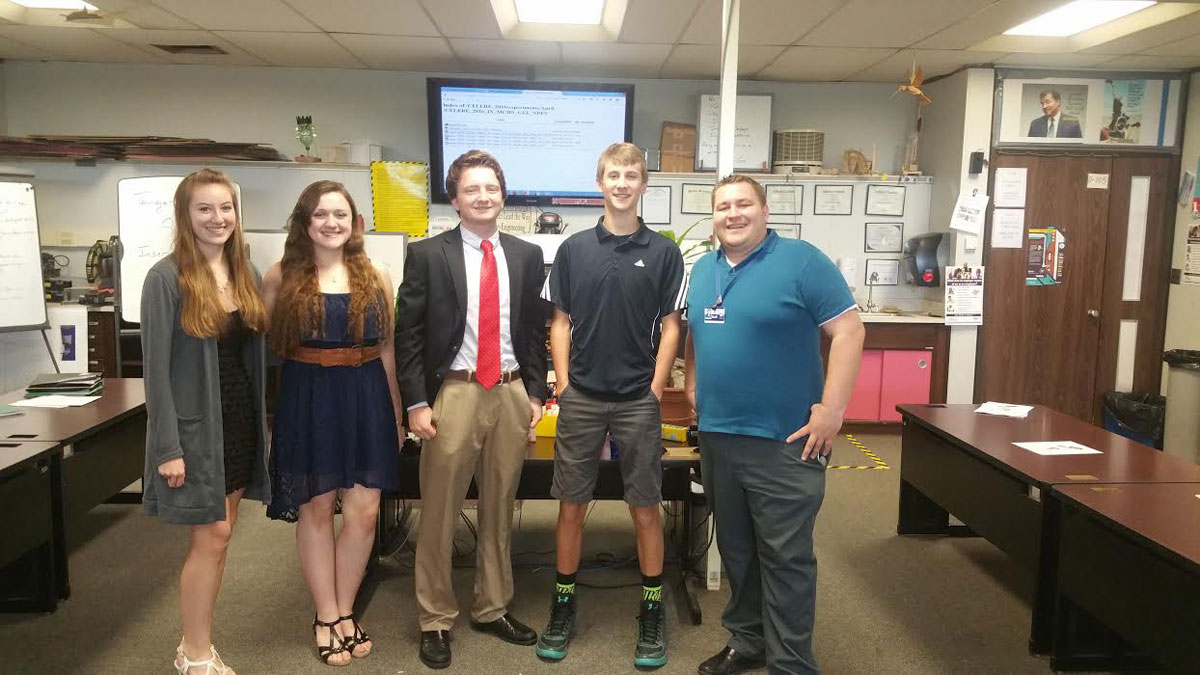A project designed by four Michigan City High School students was recently selected for microgravity testing in Oregon as part of the NASA CELERE Research Challenge.
The CELERE (Capillary Effects on Liquids Exploratory Research Experiments) challenge is a joint program of NASA and Portland State University (PSU) that enables students to participate in microgravity research similar to that conducted on the International Space Station. Using CAD software, the MCHS students submitted drawings for pieces that were later created in Oregon using a computer-controlled laser cutter. Silicon oil was placed on these pieces, which were dropped five stories in 2.1 seconds at PSU’s Dryden Drop Tower to simulate near weightlessness.
 The MCHS entry for the CELERE challenge was the only experiment selected from the state of Indiana. It was designed by students Eryn Sitar, Nicole Pomeroy, Rhiggs Thomas, and Zach Gault. Data from the experiment has been sent back to the student team, and their interpretation of the results will be shared with NASA and PSU.
The MCHS entry for the CELERE challenge was the only experiment selected from the state of Indiana. It was designed by students Eryn Sitar, Nicole Pomeroy, Rhiggs Thomas, and Zach Gault. Data from the experiment has been sent back to the student team, and their interpretation of the results will be shared with NASA and PSU.
“The experiment was basically about how liquids travel in space,” says Ralph Gee, Engineering Technology teacher at MCHS. “The entire experience has been a valuable one for these students, from applying to NASA for the opportunity, to seeing the scientific research process in action. It is exciting for them to see video footage of their experiment and to help NASA interpret the results.”
 The MCHS team is part of a new “Maker Space” club that has formed at the high school. According to Gee, the club currently has between five and ten members who meet informally after school in the MCHS Engineering lab to pursue ideas and projects they find interesting and typically go beyond the scope of classroom work.
The MCHS team is part of a new “Maker Space” club that has formed at the high school. According to Gee, the club currently has between five and ten members who meet informally after school in the MCHS Engineering lab to pursue ideas and projects they find interesting and typically go beyond the scope of classroom work.
Michigan City High School currently offers “Project Lead the Way” courses in Engineering, Biomedical Science, and Civil Engineering & Architecture. In Fall 2016, Computer Integrated Manufacturing will be added.

